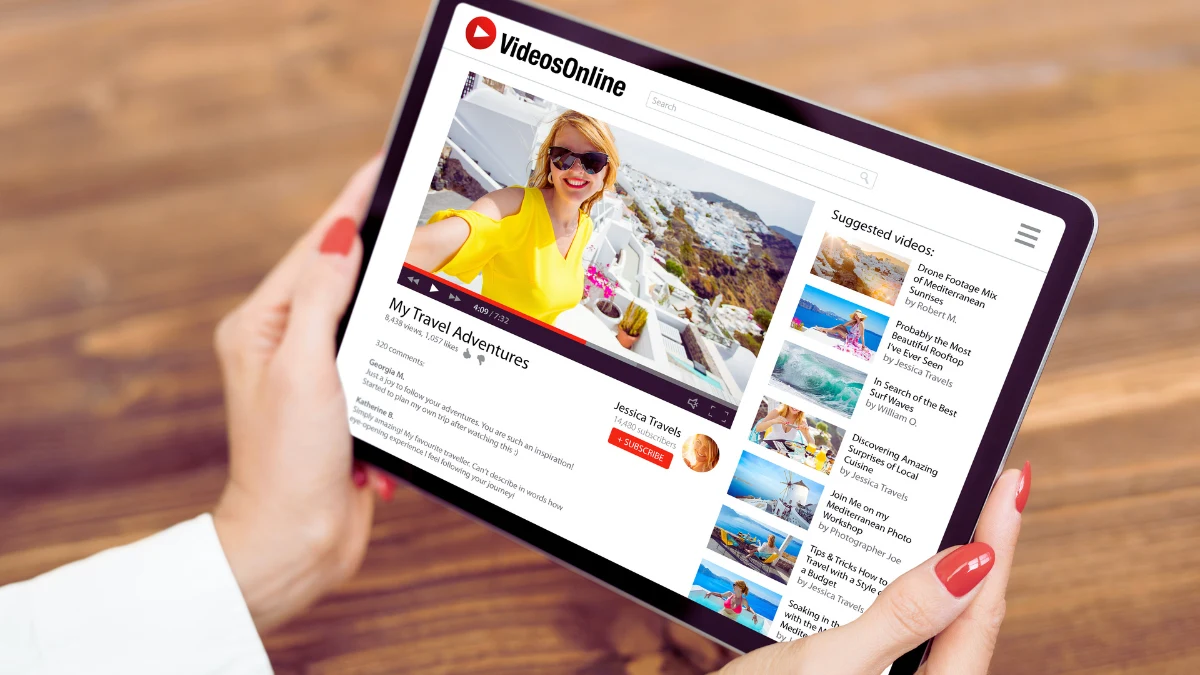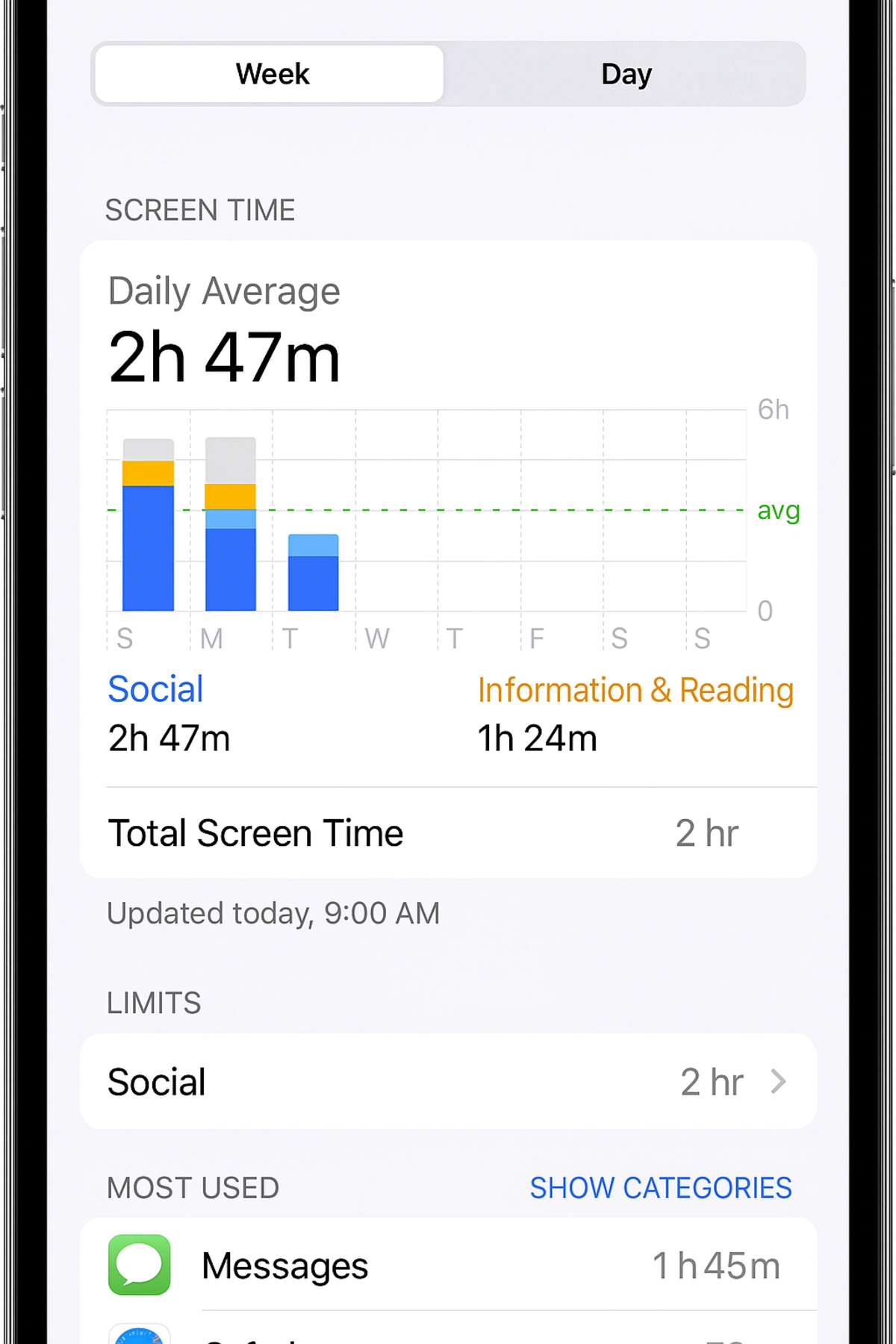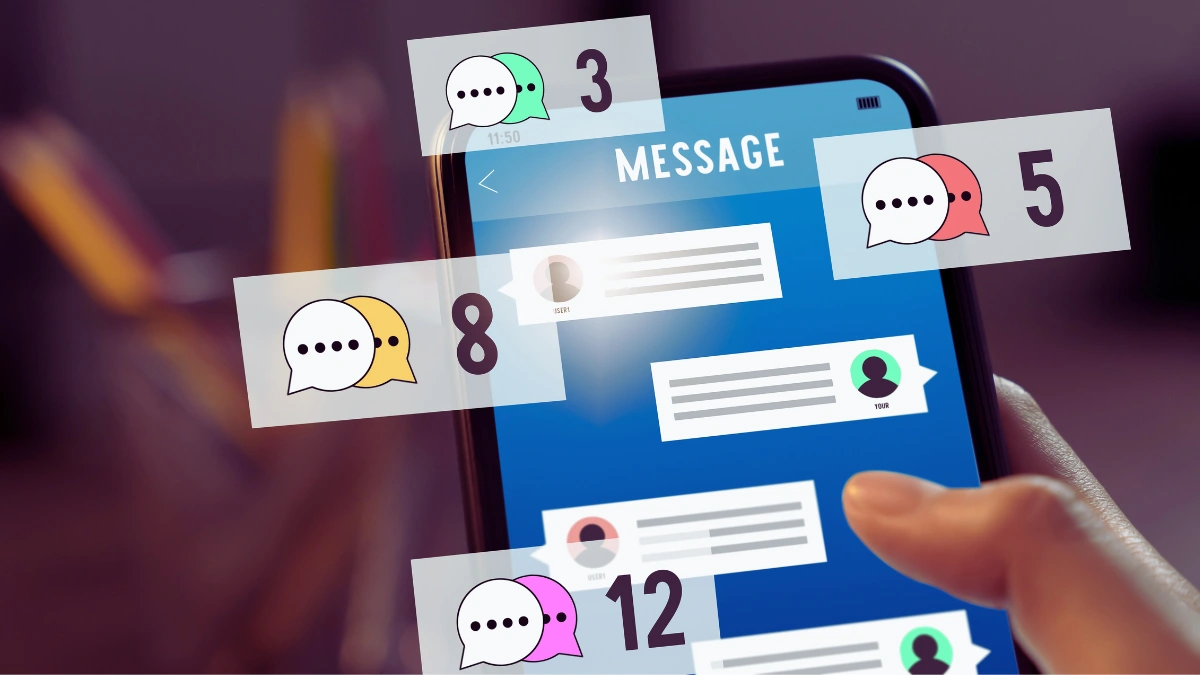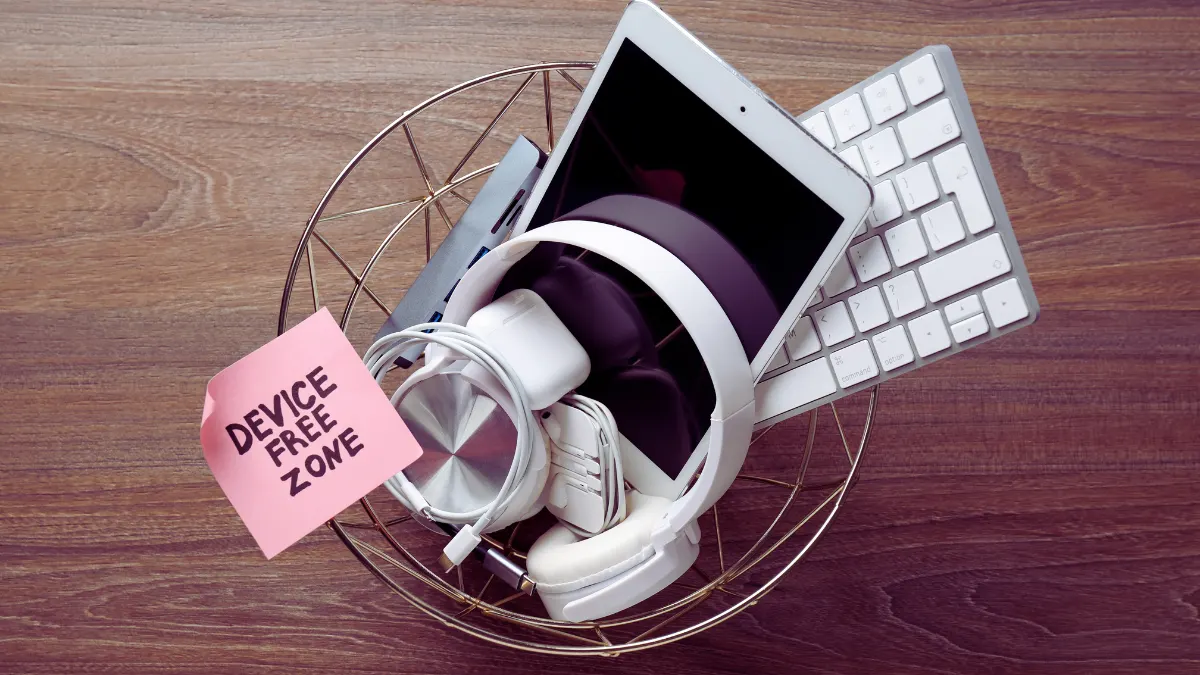Your brain isn’t yours anymore. Every tap, scroll, and like subtly changes your neural pathways, making you crave the next notification like a thirsty person craves water.
Apps now shape how you think, what you want, and when you act—all by design.
So what happens when you can’t read a book without checking your phone? When does sleep suffer because of Instagram calls? When does anxiety spike if your battery hits 10%?
The solution isn’t throwing away your devices. It’s understanding how these digital tools hack your brain chemistry, then taking back control with simple daily habits that work.

The Science and Psychology Behind App Addiction
Your phone contains apps that actively change your brain’s structure – and not by accident.
Neuroplasticity and the Rewired Brain

Your brain changes based on what you repeatedly do. This isn’t new science, but what is new is how apps exploit this natural trait.
Each time you check Instagram or TikTok, your brain forms stronger pathways craving quick hits of information. The “swipe, like, scroll” pattern becomes automatic within weeks of regular use.
Brain scans show reduced gray matter in attention centers after just 3 months of heavy social media use.
This makes focusing on slower activities like reading books or having deep conversations physically harder. Your brain wants the next notification.
Most concerning is how these changes affect decision-making. NiH study shows that people who check social media more than 10 times daily make choices that favor short-term satisfaction over long-term gains in other areas of life, too.
Dopamine’s Role in Digital Dependency

Dopamine isn’t just the “feel-good” chemical – it’s what makes you want things. Apps trigger small dopamine bursts through likes, comments, and new content alerts.
Your brain learns to crave these small hits, making you grab your phone 150+ times daily.
The effect compounds through what scientists call “intermittent variable rewards.” You never know when you’ll get something good, so you keep checking.
Instagram doesn’t show likes in a predictable pattern – sometimes you get many, few. This unpredictability is what makes apps so hard to put down.
Brain activity patterns from habitual social media users match those seen in other behavioral addictions.
The more you use, the more you need to use to feel satisfied, creating a dependency cycle that’s subtle but powerful.
Design Tactics That Exploit Human Behavior

Apps use psychological tricks refined over years of testing on billions of users. Autoplay removes the decision to continue watching, making one YouTube video turn into three hours of viewing. TikTok’s rapid-fire format exploits your brain’s inability to resist novelty.
Personalization algorithms learn exactly what keeps you engaged the longest, not what makes you happiest or most informed.
Facebook knows precisely which emotional triggers make you spend extra minutes scrolling.
Gaming apps use “core loops” – short cycles of challenge and reward that keep players engaged. Many mobile games include intentional waiting periods that can be skipped with payment, creating artificial urgency.
These techniques aren’t accidental – they’re engineered by teams of psychologists to maximize your screen time.
Daily Habits to Reclaim Your Focus

Taking back control starts with recognizing that small changes to your routine can break the cycle of app dependency.
- Start your morning without screens: Wake up with 15 minutes of stretching instead of checking your phone. This simple swap reduces anxiety by 32% according to UT Physicians. Try placing a glass of water by your bed instead of your phone, or use a regular alarm clock. Morning exercise, even just 5 minutes, resets your brain for better focus all day. Your first input matters most – make it something that serves you, not an app.
- Block your day into focused work periods: Work in 30-minute chunks with no phone access. Place your device in another room during these periods. Apps like Freedom can block distracting websites during set hours. Check email just twice daily – once at 11 am and once at 4 pm. This cuts the average 74 daily phone checks to under 20. The key is batching similar tasks rather than constantly switching contexts, which costs your brain 23 minutes of recovery time per interruption.
- Create a nightly screen curfew: Stop using screens 90 minutes before sleep. Blue light from phones reduces melatonin production by up to 50%. Replace scrolling with reading physical books – fiction works best for mental recovery. Simple activities like cooking dinner without watching videos or talking with family become powerful brain reset tools. Many people find that crossword puzzles or sketching help transition their minds from digital overload to restful sleep patterns.
Tech Tools to Counteract Manipulation
Fighting technology with technology might seem contradictory, but strategic tools can help break the grip apps have on your attention.
Apps That Fight Back

- Screen Time (iOS): Shows exact usage statistics and lets you set daily limits for specific apps. Can lock apps after reaching your limit, requiring a conscious decision to override.
- Digital Wellbeing (Android): Creates visual breakdowns of phone habits and includes “Focus Mode” to pause distracting apps when you need concentration.
- Freedom: Works across devices to block websites and apps during scheduled sessions. The paid version makes bypassing blocks difficult, adding useful friction.
- Forest: Plant virtual trees that grow while you stay off your phone. Trees die if you leave the app, adding a visual cost to distraction.
- Brave Browser: Blocks trackers and ads that fight for your attention, making web browsing less cluttered and tempting.
- LeechBlock: Lets you set complex rules for website blocking (like “only 10 minutes of Twitter per hour” or “no YouTube after 8 pm”).
RELATED:
Curating Your Digital Environment

Your feed shapes your thoughts, moods, and behaviors. Most people follow accounts that make them feel bad about themselves without realizing it. Regular audits of who you follow can dramatically change your experience.
Try the 10-second test: if seeing someone’s post makes you feel worse about yourself, unfollow immediately. No explanations needed.
Social networks try to maximize engagement, often through outrage or envy, not your well-being.
Tools like News Feed Eradicator completely remove distracting elements from social sites, letting you use functionality without getting caught in the scroll.
For email, Inbox When Ready hides new messages until you choose to see them, preventing the constant drip of interruptions that hijack your focus throughout the day.
RELATED:
Mindful Notifications

Notifications exist to pull you back into apps, not to serve your needs. Consider this: the average person receives 63.5 alerts daily, most offering minimal value. Phones buzz constantly because engagement metrics drive company profits.
Start by turning off all notifications except calls and messages from actual humans.
Social media likes, news alerts, and email notifications rarely contain truly urgent information. Your brain will thank you for the reduction in context-switching.
Take this further by scheduling notification blackouts. Set your phone to Do Not Disturb mode during your most productive hours (typically mornings) and meals.
Many find that silencing their phone between 9 pm and 9 am leads to better sleep and more focused mornings without missing anything genuinely important.
Building Long-Term Cognitive Resilience
Reclaiming your attention requires more than quick fixes—it demands systems that protect your brain over time.
Regular Digital Detoxes

Stepping away from technology completely resets neural pathways that have become dependent on constant stimulation.
Even 24 hours without social media can reduce anxiety and improve sleep quality. Monthly weekend breaks give your brain time to remember what sustained focus feels like.
Many people start with “Tech-Free Sundays,” where phones stay off and computers remain closed.
The first few hours often feel uncomfortable, even boring, which itself reveals how dependent we’ve become. By afternoon, most report feeling calmer and more creative.
Longer breaks show even more benefits. Those who take week-long breaks report better posture, improved eye contact during conversations, and reduced phantom phone sensations.
The key lies in planning meaningful alternatives: hiking trips, art projects, cooking classes, or social gatherings that don’t involve screens.
Education and Advocacy

Understanding how apps manipulate attention helps you resist their pull. Books like “Hooked” by Nir Eyal or “Stolen Focus” by Johann Hari explain exactly how tech companies compete for your attention.
Knowledge transforms vague unease into specific awareness of manipulation tactics.
Watch for dark patterns in your apps—countdown timers creating false urgency, endless scroll removing natural stopping points, or “streaks” that make stopping feel like losing. These tactics work less well once recognized.
Support organizations pushing for ethical technology. The Center for Humane Technology advocates for design that respects human attention rather than exploiting it.
Small changes, like showing usage time within apps or making unsubscribe options clearer, can help millions recover mental space from attention merchants.
Strengthening Offline Connections

Face-to-face interactions engage different neural pathways than digital communication.
Real conversations involve subtle cues—tiny facial expressions, voice tonality shifts, body language—that exercise parts of the brain that atrophy during screen time.
Make regular plans that prohibit phones by default. Some restaurants offer discounts for phones placed in containers during meals.
Friends might collect devices in a basket during gatherings. These small social contracts help everyone stay present.
Hobbies requiring sustained attention rebuild focus muscles weakened by constant interruption.
Activities like painting, playing musical instruments, cooking complex recipes, or writing by hand train your brain to enjoy deeper states of concentration.
The satisfaction from completing a challenging puzzle or finishing a chapter of writing offers a different, more lasting reward than the quick hits social media provides.
Tired of 9-5 Grind? This Program Could Be Turning Point For Your Financial FREEDOM.

This AI side hustle is specially curated for part-time hustlers and full-time entrepreneurs – you literally need PINTEREST + Canva + ChatGPT to make an extra $5K to $10K monthly with 4-6 hours of weekly work. It’s the most powerful system that’s working right now. This program comes with 3-months of 1:1 Support so there is almost 0.034% chances of failure! START YOUR JOURNEY NOW!
